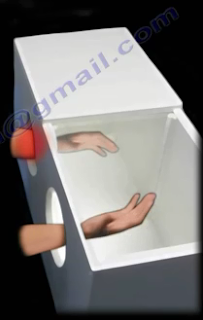Phantom pain is a common symptom after amputation of a limb.
Up to 80% of amputee patients will have phantom pain symptoms. The patient will
feel the sensation of pain in the area where the limb was amputated.
Tingling, cramping, heat or cold sensation may be felt in
addition to shooting pain and these symptoms usually decrease or disappear with
time.
The patient may feel like the foot or toes are moving or
itchy. If the symptoms continue for more than 6 months, the prognosis is
usually not good. The causes of phantom pain are not very clear. The brain
thinks that the limb is still present. The memory of pain is returned. The signal
is interpreted as pain, regardless of the signal from the injured nerve. Peripheral
and psychological factors may contribute to the condition of phantom pain.
Peripheral Theory
The pain may result from the nerve endings making a neuroma.
The neuroma may generate an abnormal electric impulse that the brain will
interpret as pain.
The term “phantom” does not mean that the symptoms are imaginary
or “in the patient’s head”. Phantom pain is a real phenomenon. The symptoms of
phantom pain may range from mild to severe and the pain may be constant.
Treatment
There are multiple treatment options that will depend on the
level of the pain. Heat, massage, biofeedback and relaxation techniques,
physical therapy, TENS unit, medications (including anticonvulsant or
antidepressants) and surgery may be utilized. Surgery is usually used for
neuromas. Neurostimulation technique is used as a spinal cord or deep brain
stimulation.
Mirror Box Visual
Feedback Therapy
A mirror box is a box with two mirrors in the center (one
facing each way) that is used to help patients feel like they still have a limb
after having it amputated. The patient placed both the amputated limb and the
other limb into the holes of the mirror box. The mirror is used to create a
reflection of the non-amputated limb. Some people find that by doing exercises
and moving the limb it can help to relieve the pain from phantom pain.



